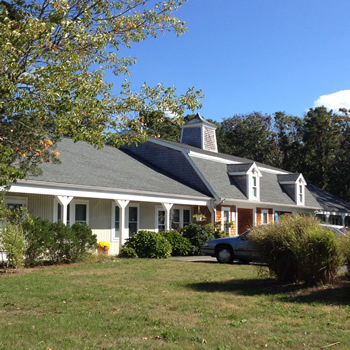 Martha’s Vineyard’s year-round community’s demographics and housing needs are far different from the Island’s image of wealth and plenty. The population is getting older as young families leave, and it includes a large number of low-income households. With elderly residents on fixed incomes and younger wage-earners working in lower paying service-sector jobs, more than a quarter of all Vineyard households were earning less than $35,000 in 2010. The numbers and percentages of people living in poverty on the Island have also been rising.
Martha’s Vineyard’s year-round community’s demographics and housing needs are far different from the Island’s image of wealth and plenty. The population is getting older as young families leave, and it includes a large number of low-income households. With elderly residents on fixed incomes and younger wage-earners working in lower paying service-sector jobs, more than a quarter of all Vineyard households were earning less than $35,000 in 2010. The numbers and percentages of people living in poverty on the Island have also been rising.
The challenges to establishing a secure residence on Martha’s Vineyard have become insurmountable for a growing segment of the population, including a majority of those who grew up here, many skilled and well paid workers, and older households of moderate income.
2020 Update to the Housing Needs Assessment
Reasons for the Housing Situation
-
The growing population and the finite size of the Island mean that there is increasing development pressure. Much of the Island has already been built up and there is considerable demand, for both development and conservation purposes, for the remaining available land.
-
As with other seasonal tourist areas, permanent residents must compete with vacation renters or homebuyers. Second-home buyers can outbid year-round residents wanting to purchase homes. Many tenants do not have stable year-round housing and are required to do the "Island shuffle", vacating their winter housing between May and September, so that owners can rent those accommodations at higher summer rates.
-
Seasonal workers further add to the pressure for housing during the tourist season.
Making Progress
Since the 2001 publication of the Island’s first assessment of housing needs, Preserving Community, a great deal of hard work, strong community commitments and collaboration, and a substantial investment of local resources has produced a significant amount of affordable housing, The Island has seen development of about 300 affordable and community housing units. Approximately another hundred units are subsidized through the Dukes County Regional Housing Authority’s Rental Assistance Program and rental vouchers. Additionally, the establishment of town Affordable Housing Committees and Affordable Housing Trusts, as well as the passage of the Community Preservation Act (CPA) have enhanced the capacity of each town to provide more affordable housing. But much more work needs to be done to address pressing housing needs.
Today's Unmet Housing Needs
-
Affordable Housing: Permanently deed-restricted, year-round housing affordable to individuals and families earning up to 80% of Area Median Income (AMI, as determined annually by HUD).
-
Community Housing: Permanently deed-restricted, year-round housing affordable up to 150% AMI.
-
Workforce Housing: Year-round or seasonal housing used by working people.
-
Housing for Seniors and Those Needing Assisted Living: This includes a range of level of assistance for the elderly as well as for people with mental and physical handicaps.
-
Homeless: Island residents without housing.

